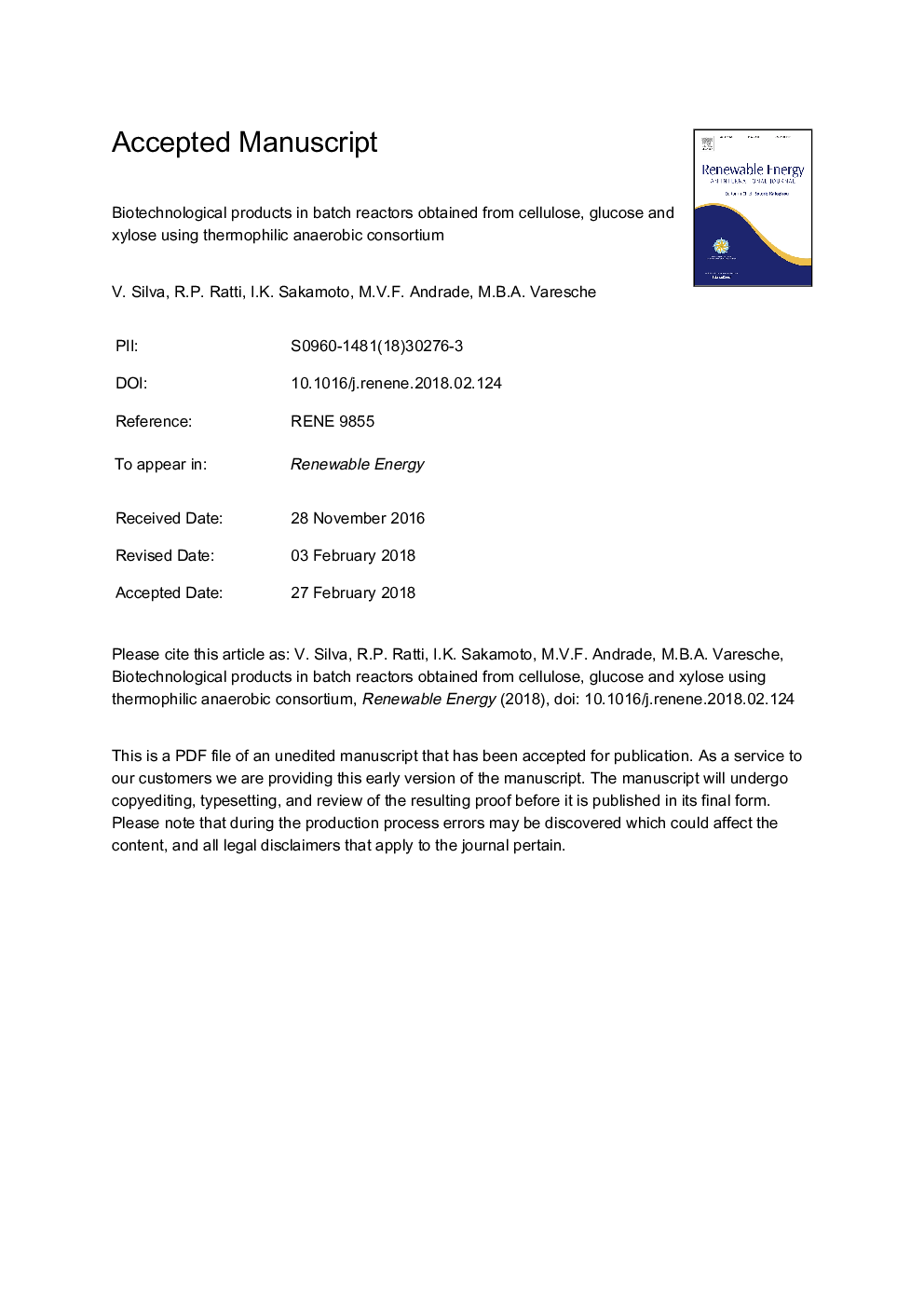| Article ID | Journal | Published Year | Pages | File Type |
|---|---|---|---|---|
| 6764387 | Renewable Energy | 2018 | 22 Pages |
Abstract
Lignocellulosic residues used for biofuel production is an alternative source to increase the energy supply. However, the cellulose found in this biomass must be made available in fermentable sugars, requiring a complex enzymatic mechanism only found in specific microorganisms. Some thermophilic and anaerobic bacteria of the Clostridium species are able to produce cellulolytic enzymes and metabolize pentose and hexose to ethanol. Therefore, we evaluated the degradation of cellulose, glucose, and xylose through the use of a thermophilic microbial consortium and ethanol production. The batch tests were performed in Thermoanaerobacter ethanolicus medium at 55â¯Â°C, pH 7. The tests were performed using 5.51â¯mmol/L glucose, 8.06â¯mmol/L xylose and 1â¯g/L cellulose. The highest ethanol yield was observed in the reactor with glucose (1.73â¯mol-EtOH/mol-glucose), followed by the reactor with xylose (1.33â¯mol-EtOH/mol-xylose). In contrast, the reactor with cellulose exhibited lower ethanol yield (1.88.10â3â¯mol-EtOH/g-cellulose), acetic acid and methane were also observed. Bacteria similar to Caloramator sp., Fervidobacterium sp., Thermoanaerobacterium sp. and Ethanoligenens sp. were identified by Illumina MiSeq sequencing, all related to the ethanol production.
Related Topics
Physical Sciences and Engineering
Energy
Renewable Energy, Sustainability and the Environment
Authors
V. Silva, R.P. Ratti, I.K. Sakamoto, M.V.F. Andrade, M.B.A. Varesche,
